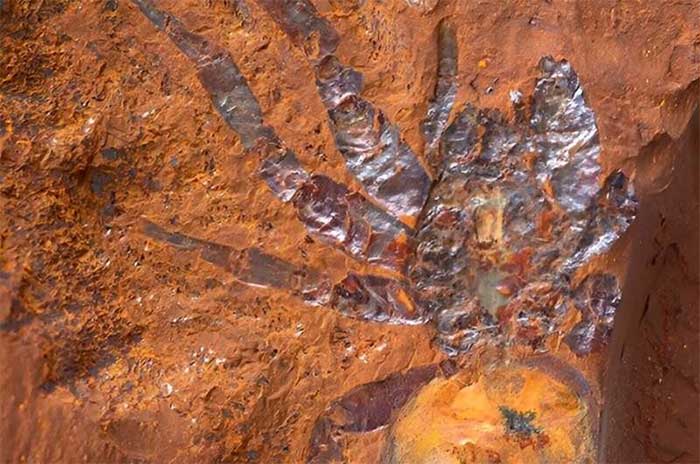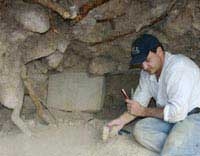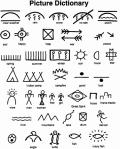A newly identified fossil spider species named Megamonodontium Mccluskyi has been established to honor the contributions of paleontologist Dr. Matthew McCurry from the University of New South Wales, who discovered the specimen.
According to a reporter in Sydney, Australian scientists have recently discovered the fossil of a large spider dating back between 11 million and 16 million years.
This is the largest spider fossil ever recorded in Australia and the first fossil of the Barychelidae family found globally.

This is the largest spider fossil ever recorded in Australia. (Photo: Australian Museum).
The newly named spider fossil, Megamonodontium Mccluskyi, was designated to honor the contributions of Dr. Matthew McCurry from the University of New South Wales (UNSW), who discovered the specimen.
The fossil was found in the McGraths Flat excavation area in central New South Wales, Australia—a site renowned for its unique fossils of various animal and plant species from the Miocene epoch (23 million to 5 million years ago).
The discovery was published in the Zoological Journal of the Linnean Society, recently released by Oxford University Press in the UK.
Scientists indicate that the new spider fossil resembles species from the Monodontium genus (“trapdoor spider”) but is five times larger than species within this genus.
Dr. McCurry believes this discovery is scientifically significant, as only four spider fossils have previously been found across the Australian continent, making it challenging for scientists to understand the evolutionary process of this species.
The fossil reveals new information about the extinction processes of spider species and fills a knowledge gap regarding the historical processes of the Oceania region.
According to Dr. McCurry, the closest relatives of this fossil currently inhabit the lush rainforests stretching from Singapore to Papua New Guinea.
This suggests that these species once thrived in a similar environment on the Australian continent but became extinct as this Oceania nation grew drier.
Dr. Robert Raven, a spider researcher at the Queensland Museum and the supervising author of the study, stated that this is not only the largest spider fossil ever found in Australia but also the first fossil of the Barychelidae family discovered worldwide.
Associate Professor Michael Frese from the University of Canberra, who utilized micro-CT scanning techniques to examine the samples, noted that the spider fossil found at McGraths Flat displays “incredibly well-preserved details.”
He described: “By using electron microscopy, the research team was able to study fine details on the claws and the stiff hairs on the spider’s feet, legs, and body. These stiff hairs resemble bristles but may serve various functions. These hairs can help the spider sense chemicals and vibrations, protect against predators, and even produce sound.”
The newly discovered fossil is preserved in the paleontological collection at the Australian Museum (AM) in Sydney and is available online for research purposes.





















































